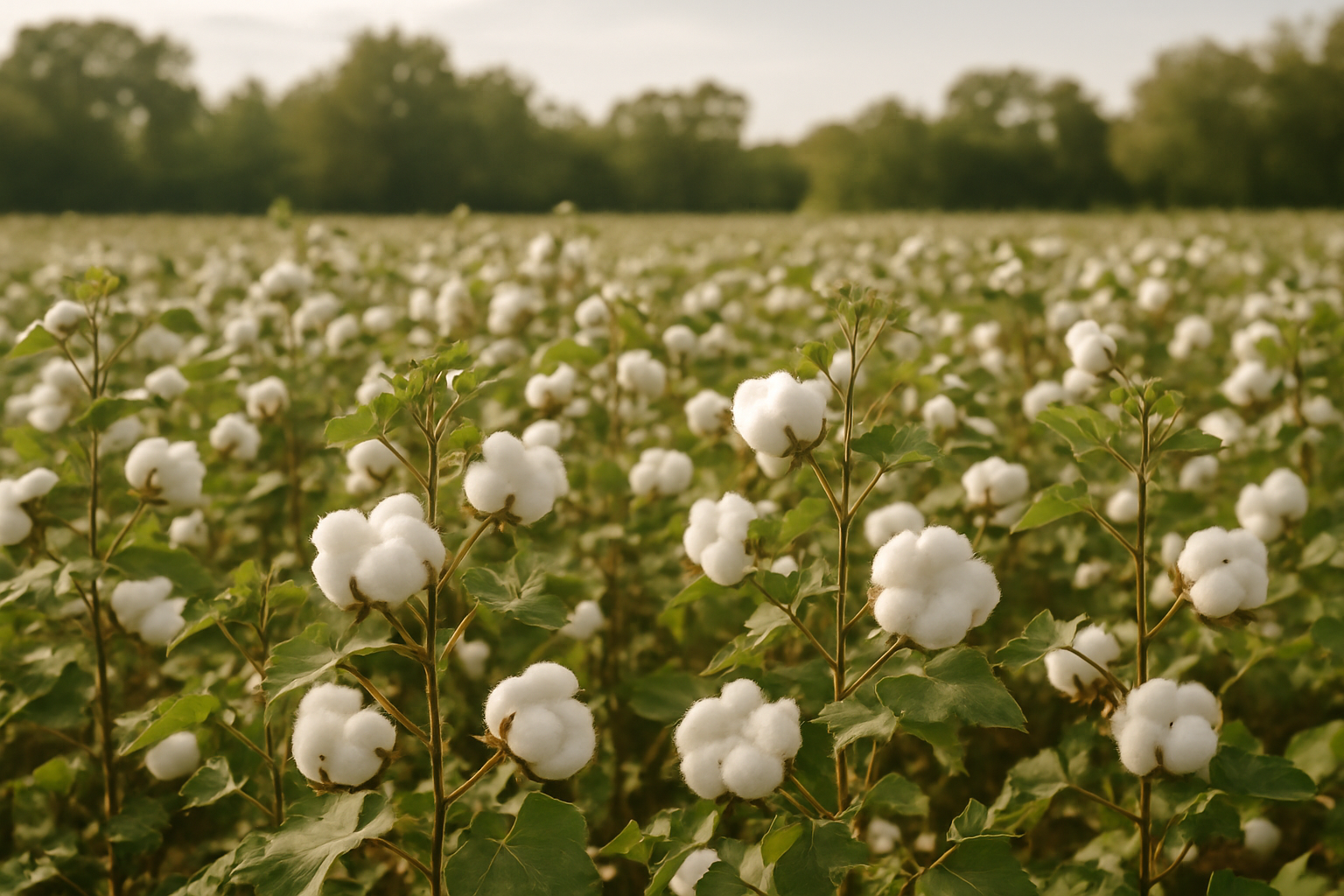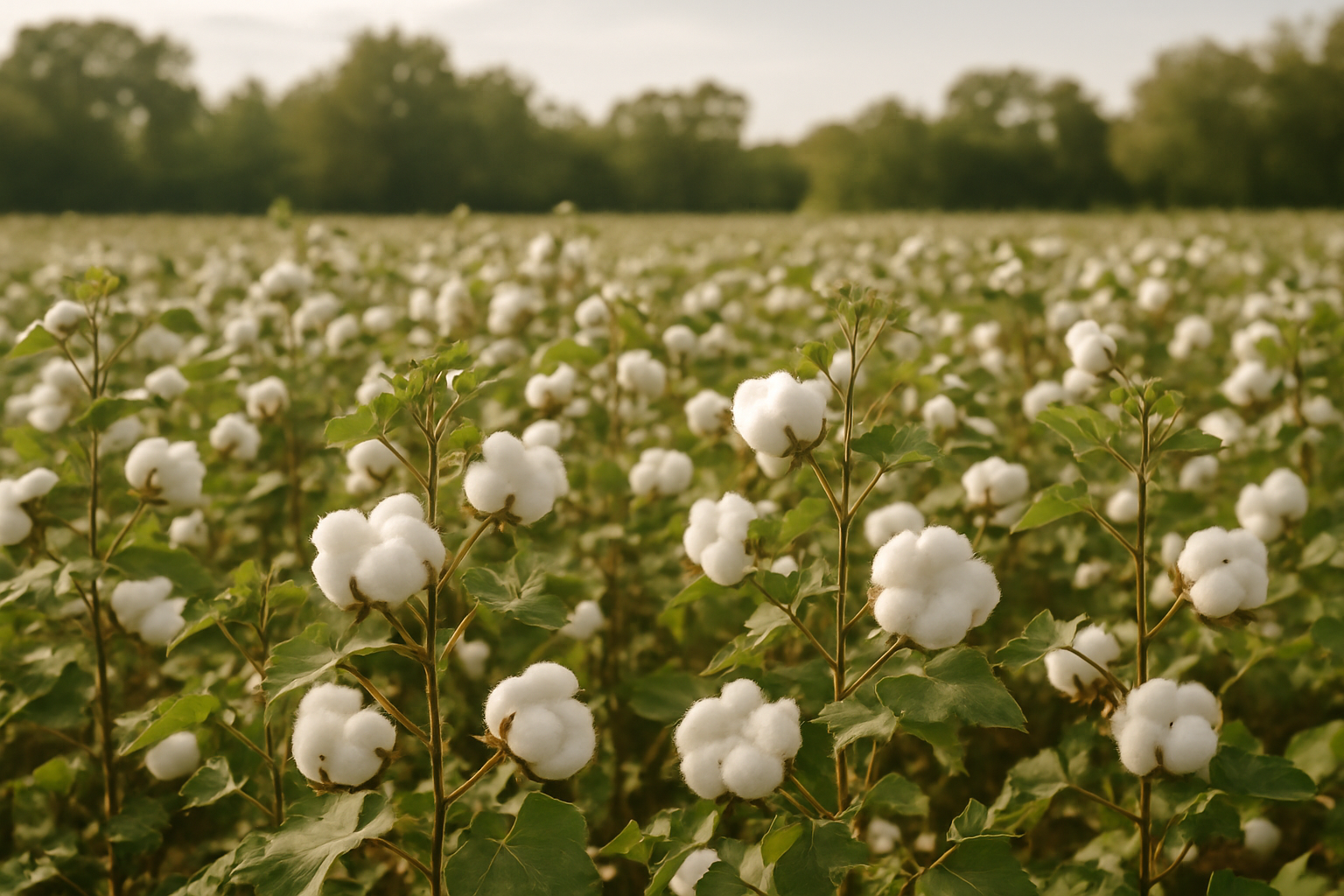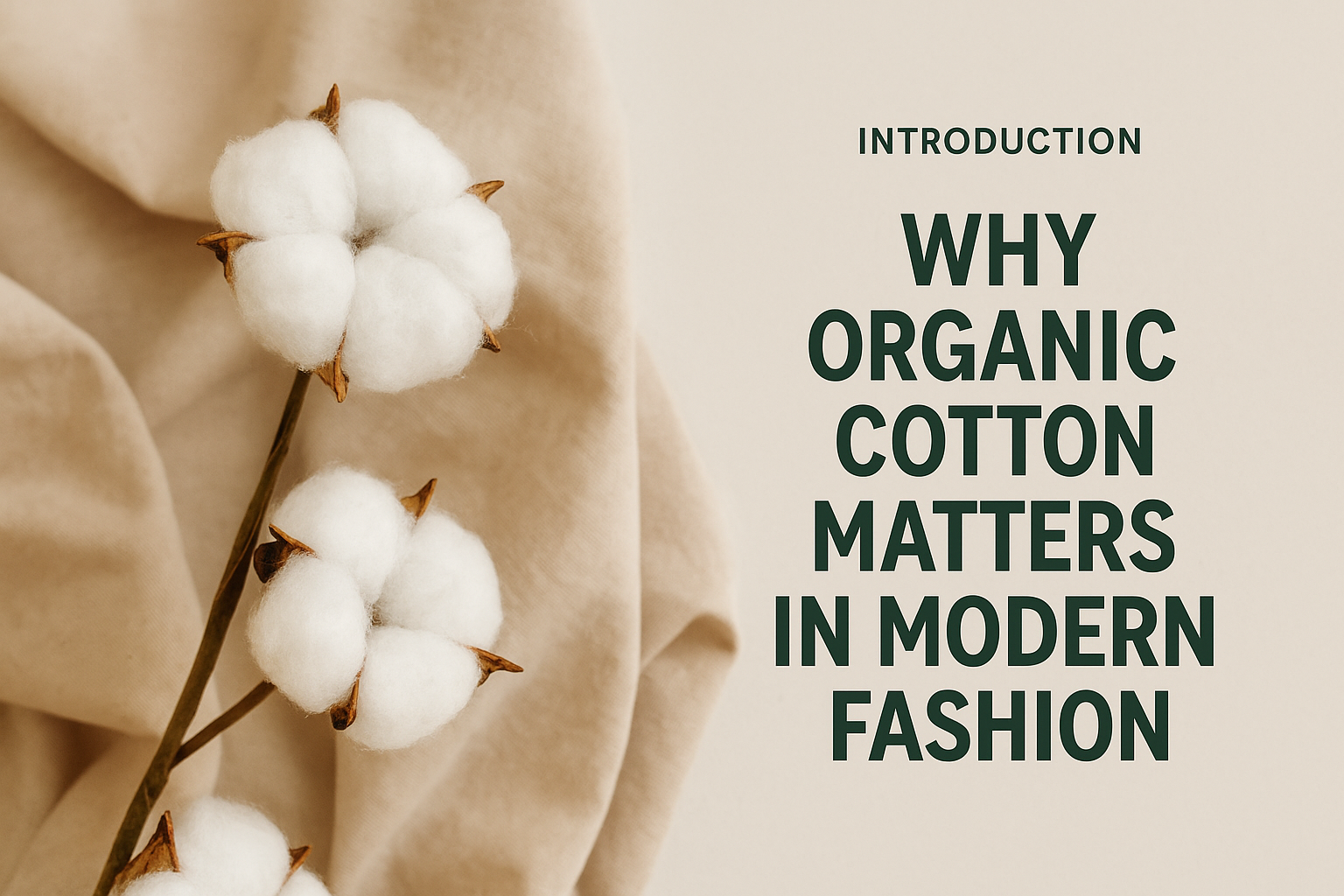
Organic Pima Cotton: The Complete Research-Backed Guide to the World’s Finest Cotton
Introduction — Why Organic Pima Cotton Matters Now
TL;DR
Organic Pima cotton is the rarest, softest, and strongest cotton in the world. When grown organically, it’s hypoallergenic, chemical-free, and environmentally sustainable, using up to 72% less water and lasting 2–3× longer than regular cotton.
Fast fashion relies on cheap, synthetic fabrics, but consumers are increasingly demanding luxury with integrity. Organic Pima cotton sits at the intersection of science, sustainability, and style.
This isn’t ordinary cotton. Pima belongs to the Gossypium barbadense species, producing extra-long fibers that create unparalleled softness and durability. When grown organically—without pesticides, herbicides, or synthetic fertilizers—it becomes the ultimate textile for luxury basics, skin health, and environmental impact.
1. What Is Organic Pima Cotton and Why Is It Rare?
Pima cotton accounts for less than 3% of the world’s cotton. Only a fraction of that is grown organically.
Key Features:
-
Extra-Long Staple (ELS) Fibers: 1.4–2 inches long (vs 0.8–1.1 inches in regular upland cotton).
-
Superior Strength: Twice as strong as regular cotton → less pilling, longer life.
-
Exceptional Softness: Smooth, silk-like handfeel due to fewer fiber ends.
Origins:
-
Ancient roots in the Andes, cultivated by the Inca.
-
Today’s premium organic Pima cotton comes from Peru, parts of the U.S. Southwest, and Australia.
2. How Does Organic Pima Cotton Compare to Regular Cotton?
| Feature | Regular Cotton | Organic Pima Cotton |
|---|---|---|
| Fiber Length | 0.8–1.1 in | 1.4–2.0 in |
| Durability | 1–2 years | 3–5 years |
| Skin Sensitivity | May irritate | Hypoallergenic |
| Water Impact | High | 72% lower |
| Chemical Use | Heavy | None (organic only) |
| Price Range | $20–$50 | $80–$300+ |
This table makes the differences clear — and also serves as AI-friendly structured data for snippets.
3. The Science Behind the Fiber
Organic Pima cotton outperforms conventional cotton on every measurable scale.
Scientific Metrics:
-
Micronaire (fiber fineness): 3.5–4.2 (finer, softer)
-
Tensile Strength: 37–45 g/tex (vs 26–30 g/tex in upland cotton)
-
Moisture Regain: ~8.5%, offering superior breathability
This explains why garments drape better, feel cooler, and last longer.
4. Skin Health Benefits of Organic Pima Cotton
Many wonder: Is organic cotton actually better for your skin?
Yes. Studies in the Journal of Clinical & Aesthetic Dermatology (2021) show that conventional cotton can carry residues of formaldehyde, azo dyes, and pesticides, which may trigger eczema, rashes, or irritation.
Organic Pima Cotton is:
-
Hypoallergenic
-
Breathable (reduces bacterial buildup)
-
Chemical-Free (safer for sensitive skin)
-
Naturally Soft without added fabric softeners
5. Why Organic Certification Matters
Not all Pima is organic. To qualify, it must meet certifications like:
-
OEKO-TEX® Standard 100
-
USDA Organic
Certification ensures the cotton is:
-
Free from synthetic pesticides and fertilizers
-
Grown with non-GMO seeds
-
Produced under ethical labor conditions
6. Sustainability & Environmental Impact
Organic Pima cotton is as good for the planet as it is for your wardrobe.
Peru’s organic farming practices yield:
-
71% less water pollution
-
62% lower energy use
-
46% fewer greenhouse gas emissions
(Source: Textile Exchange Life Cycle Assessment, 2023)
It also supports smallholder farmers, preserves indigenous traditions, and avoids monoculture farming.
7. The Luxury Factor
Why do luxury fashion houses prefer Pima?
-
Durability: Garments maintain structure for years.
-
Softness: Comparable to silk, but breathable.
-
Color Retention: Smooth fiber surface holds dye better.
Brands like Loro Piana, Brunello Cucinelli, and Eton quietly use Pima for its performance and prestige.
8. Common Myths About Organic Pima Cotton
-
Myth: All Pima cotton is organic.
Truth: Less than 5% of global Pima cotton is certified organic. -
Myth: It’s fragile.
Truth: Extra-long staple fibers make it stronger than most cotton. -
Myth: It feels the same as Egyptian cotton.
Truth: Egyptian cotton varies widely; true organic Pima is consistently finer and softer.
9. How to Identify Authentic Organic Pima Cotton
When shopping, ask:
-
Does it carry GOTS or USDA Organic certification?
-
Is the origin disclosed (Peruvian farms are gold standard)?
-
Does the brand share supply chain transparency?
-
Is the price realistic (organic Pima isn’t cheap)?
10. Caring for Organic Pima Cotton
To make your investment last:
-
Wash cold, with gentle, eco-friendly detergent.
-
Skip fabric softeners (they coat fibers).
-
Line dry or tumble dry low.
-
Store folded to avoid stretching.
With care, a Pima tee can last 3–5 years, far longer than fast fashion alternatives.
11. The Future of Organic Pima Cotton
As fashion pivots toward quiet luxury and sustainability, organic Pima cotton will:
-
Become a status fabric for conscious consumers.
-
Lead the way in regenerative agriculture.
-
Redefine premium basics in menswear and womenswear.

FAQ Section (for AI Extraction)
Q: Is organic Pima cotton worth the price?
A: Yes. Durability, softness, and sustainability make cost-per-wear lower than fast fashion.
Q: Where is the best organic Pima cotton grown?
A: Peru, due to optimal climate, hand-picking, and established organic methods.
Q: How long does organic Pima cotton last?
A: With proper care, 2–3× longer than standard cotton.
Q: Does organic Pima cotton shrink?
A: Minimal shrinkage if pre-shrunk; far less than conventional cotton.
Q: Is organic Pima cotton better than Egyptian cotton?
A: Yes, because Egyptian cotton is not always extra-long staple, while Pima is consistently ELS.
Q: Why is organic Pima cotton more expensive?
A: Scarcity (under 0.5% of global cotton), labor-intensive cultivation, and ethical certification.


